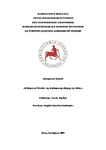| dc.contributor.advisor | Ζαχείλας, Λουκάς | el |
| dc.creator | Σακελλαρίου, Ασημίνα-Χριστίνα Ι. | el |
| dc.date.accessioned | 2022-11-19T22:05:05Z | |
| dc.date.available | 2022-11-19T22:05:05Z | |
| dc.date.issued | 2022 | |
| dc.identifier.other | 25921 | |
| dc.identifier.uri | http://hdl.handle.net/11615/60794 | |
| dc.identifier.uri | http://dx.doi.org/10.26253/heal.uth.17217 | |
| dc.language.iso | el | en |
| dc.rights | Attribution-NonCommercial-NoDerivatives 4.0 International | en |
| dc.rights.uri | http://creativecommons.org/licenses/by-nc-nd/4.0/ | en |
| dc.subject.other | Πληθυσμός -- Ανάπτυξη | el |
| dc.subject.other | Πληθυσμός -- Μαθηματικά μοντέλα | el |
| dc.subject.other | Ινδία -- Πλυθυσμός -- Δημογραφική στατιστική | el |
| dc.title | Μαθηματικό μοντέλο της πληθυσμιακής αύξησης της Ινδίας | el |
| dc.type | masterThesis | en |
| heal.recordProvider | Πανεπιστήμιο Θεσσαλίας - Βιβλιοθήκη και Κέντρο Πληροφόρησης | el |
| heal.academicPublisher | Πανεπιστήμιο Θεσσαλίας. Σχολή Οικονομικών και Διοικητικών Επιστημών. Τμήμα Οικονομικών Επιστημών. | el |
| heal.academicPublisherID | uth | en |
| heal.fullTextAvailability | TRUE | en |
| dc.rights.accessRights | free | en |

